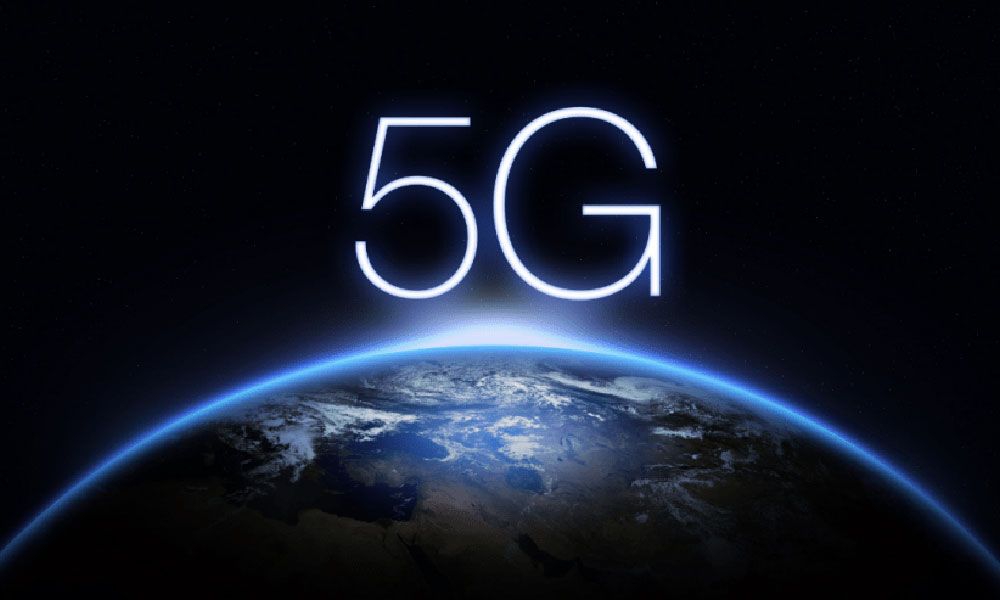The Impact of 5G Technology on Business and When 6G Will Come?

5G is one of the latest technology buzzwords in the business world. It sets the scene for advanced remote control, intelligent transportation, and workplace automation.
5G technology is developing rapidly to enable the next generation of wireless communications and power the metaverse. It is paving the way for more than just super-fast data transfer. The question is, what does that look like?
This article deals with how 5G technology works and why it will be so valuable for organisations in the near future.
The New Generation of Networks
Since the first mobile phone call was made in 1973, the mobile industry has seen breathtaking advances. On December 1, 2018, South Korea became the world's first 5G country. Ever since, mobile devices have changed our world by reshaping how we communicate, engage in business, and access information. Following this event, many countries started adopting 5G technology in 2020 and are set to increase data usage exponentially as more people get on board with all the benefits this technology has to offer.
To understand where we are today, due to the inevitable rise in wireless standards from 1G to 5G, it is useful to chart their unstoppable spread across the globe.
1G Technology (1979)
NTT introduced the first generation of mobile networks to Japan in 1979 and, by 1984, had expanded coverage throughout its home country.
The first generation of mobile telecommunications technology, which went into operation in 1983, made it possible for users to make and receive calls on handheld devices such as the Motorola DynaTAC. Canada was among the countries that adopted 1G shortly after its introduction.
But 1G technology suffered from several drawbacks: poor coverage, low sound quality, and the lack of roaming support between various operators. As different systems operated on different frequency ranges, they had no compatibility. When switching carriers or travelling internationally, making or receiving calls was extremely expensive.
Furthermore, the calls were not encrypted, so they could easily be intercepted. Despite its drawbacks and hefty price tag, DynaTAC still managed to rack up an astonishing 20 million global subscribers by 1990. The success of 1G paved the way for 2G – appropriately dubbed such due to technical advancements like better processing power.
2G Technology (1991)
The second generation of mobile networks—known as 2G—was first implemented in Finland under the Global System for Mobile Communications (GSM) standard in 1991. With this system, encrypted calls were possible for the first time, and digital voice calling was significantly clearer with less static or background crackling than traditional analog services had been able to provide.
But 2G was about far more than just making phone calls; it also enabled the transmission of text messages and multimedia content, transforming communications in ways no one could have foreseen. By the time 2G came along, 1G was already well-established. This meant that people enthusiastically adopted 2G—and it became hugely popular among consumers and businesses.
Although the transmission speeds in 2G networks were slow at first—around 237 kbps (0.2 Mbps)— mobile-phone operators invested heavily in building new infrastructure such as mobile cell towers since there was so much demand for the service.
Despite relatively sluggish speeds, 2G revolutionised the business landscape and changed the world forever. Moving from snail-paced dial-up Internet connections to blazing fast mobile broadband (relatively speaking compared to what we are used to today, of course) was like going from cave paintings to Michelangelo's Sistine Chapel—in just a few years.
3G Technology (2000)
In 2001, NTT DoCoMo launched 3G and standardised the network protocol used by vendors. This meant that users could access data from any location worldwide—as long as their phones were equipped to use it. No longer would travellers be limited to their home country's phone services when travelling abroad.
The increased speed of data transfer made possible by 3G networks allowed for the proliferation of new services such as video conferencing, streaming media, and voice-over IP (such as Skype). In 2002, the Blackberry smartphone was launched—many powerful features of this device were enabled by its ability to connect via 3G.
4G Technology (2008)
The transition from 2G phone networks to 3G was simple: Users just needed new SIM cards. However, making the leap up to 4G was a more complicated matter as it required that phones be built with this capability in mind.
This change made it possible for device manufacturers to scale their profits dramatically and was one factor behind Apple's rise to become the world’s first trillion-dollar company.
According to Statista, approximately 4.7 billion users will use 4G/LTE by 2023, becoming the standard worldwide.
A Closer Look at 5G and its Current Impact
The development of 5G technology dates from 2008, with the aim to make better use of the radio spectrum and enable many devices to be connected simultaneously. It uses higher frequency waves with shorter wavelengths than previous generations.
5G is much better at handling thousands of devices simultaneously, meaning that a single network can handle mobile phones and equipment sensors—among many other forms of hardware—without slowing down.
The higher-frequency radio bands in which 5G operates - 3.5GHz (gigahertz) to 26GHz and beyond - have much greater capacity than their predecessors. Still, some infrastructure issues are created because cell towers must be spaced more closely to achieve a good signal. In addition, 5G wireless technology is designed to deliver much higher peak data speeds, ultra-low latency, and greater reliability and capacity than previous networks—allowing more users per cell and better performance in dense urban areas.
For 5G to work, the most important cellphone companies in the world will need to install many more transmitters and receivers near homes. It is a significant investment, requiring these companies to be wholly committed to the technology; further negotiations with small towns and municipalities over placing smaller boxes may also be necessary.
Nowadays, of the countries that have begun the 5G rollout, China and the United States lead with a combined 652 cities where 5G is available. The Philippines has been able to roll out active connections in 98 cities—making it closest in terms of its rollout schedule.
As leaders focus on building new opportunities and compelling technologies, including the WiFi 6E standard and private 5G networks, they will shift their attention away from simply staying operational.
Executives can benefit from the increasing value that wireless infrastructure and applications unlock by leveraging new location-based services within their networks. In other words, organisations are capable of developing entirely new services and insights that can support their evolving business objectives.
Already, 5G has impacted many organisations, so let's look at a few examples:
Making remote work possible
With the advent of 5G wireless, people no longer have to be tied down by a mandatory location. With high-speed internet available anywhere, people have the freedom to live anywhere they wish. In fact, as carriers upgrade the network, people living in rural areas and other broadband dead zones will gain access to high-speed internet. This will significantly help the local economy and connect more populations that have traditionally been isolated due to a lack of access to fibre optics that would allow them to connect to more populated areas.
Bringing Edge Computing to the Next Level
5G will enable the creation of new edge computing systems that augment cloud infrastructure. By using advanced networking technology, businesses that engage in frequent transactions (such as FinTech companies and mobile banking) or need real-time interaction with their users (such as online gaming providers and live sports broadcasters) can now offer incredibly fast services in sub-10ms latency.
Improving the Performance of Apps
5G already provides substantial improvements over its predecessors in predictability, which translates into reliable application performance for business users. As cellular networks increase bandwidth and enhance the quality and quantity of content delivered to mobile devices—such as smartphones or tablets—5G's benefits will be even more evident for a more user-friendly experience.
Using AI and Automation to Enable New Innovations
Many companies like Amazon, through Amazon Web Services (AWS), have already begun using new automation and artificial intelligence technologies that depend on faster download speeds.
As businesses prepare for the future and modernise, 5G's lower latency and faster speeds will be difficult to ignore-especially when combined with automation.
Analysing product and process performance
5G technology makes data a commodity that everyone can access. With the ability to collect so much data in real-time with low latency (almost 100% uptime), we can gain insights into product and process performance that were never before possible. Understanding trending data helps us recognise patterns or issues, allowing for better predictions and therefore improving internal processes, services, and products, among many other things, for optimisation of enterprises and organisations.
A Few Examples of 5G Technology
5G technology will enable new types of intelligent devices to communicate with one another and with their users. These devices can be integrated into various systems, allowing them to self-organise to address a broad spectrum of applications and services. Here are some examples.
Smart Cities
One of 5G's primary uses is for smart city applications, such as the Alba Iulia Smart City in Romani. This smart city has traffic monitors, parking sensors, and waste management systems. With the advent of 5G, factories will accommodate an influx of robots on assembly lines and drones for last-mile deliveries. Cars will communicate with one another to avoid hazards or accidents and become fully automated.
Alba Iulia is a relatively small city, but it is an excellent example of the potential of WiFi and IoT connectivity powered by 5G to transform how citizens interact with the government — as well as businesses and visitors — could improve everyone's lives.
Autonomous Vehicles
The automotive industry is poised to experience significant changes in the future with connected and autonomous vehicles—including driverless cars on 5G networks.
With the advent of 5G technology, we will see a new wave of business models. The faster response times made possible by low latency data streams means businesses can deploy more complex applications—and get back to their customers faster.
A US-based startup, Movandi, develops 5G ecosystems for connected vehicles. All 5G mmWave bands are supported by the company's integrated antenna modules and radio-frequency chips. Movandi's algorithms and systems enhance signal coverage while eliminating self-interference.
Furthermore, Movandi BeamXR technology allows smart repeaters to seamlessly integrate with gNB (5G NodeB) and operator networks. These innovations make it easier for operators to implement 5G technologies in their connected-car and cellular vehicle-to-everything (C-V2X) applications—and provide mobile hotspots as an additional source of revenue in nonroaming markets.
Immersive Experiences
Recently, T-Mobile and Qualcomm have partnered to build augmented reality (AR) applications for smart glasses (such as the Niantic Planet-Scale AR Alliance powered by 5G). The new participants will work alongside other developers and entrepreneurs to build immersive AR experiences for smart glasses using T-Mobile's 5G network.
With its gigabit speeds and next-generation technology, T-Mobile’s new 5G network is ushering in a new era of mobile computing. And with the Snapdragon Spaces XR developer platform, you can create augmented reality (AR), virtual reality (VR), mixed reality (MR), or other immersive experiences that transform smartphones into powerful pocket computers.
Smart Factories
Ford and Mercedes-Benz are using 5G technology to build smarter factories. Ford and Mercedes-Benz and companies such as John Deere rely on intelligent technologies like the Internet of Things (IoT) to power smart factories. Now they are looking at how 5G can drive further innovation in their facilities.
Private 5G networks—networks that don't share traffic with other cellular networks in the vicinity—play an important role in these factories as they are gaining traction around the world since regulators allocate more spectrum to enterprises.
This will be a game-changer for enterprises, specifically those that manufacture goods and require 5G capabilities to implement the transformative applications needed in smart factories, digital transformation efforts and IoT implementations.
Quality Control
Logistics company Ice Mobility, is working with Microsoft and Verizon to test their in-house wireless platform and improve their current quality control processes.
The company implemented a new computer vision-based quality control system with this partnership. The high-definition cameras above every one of their pick lines allow them to see what is happening on the line, which enables them to keep better track of inventory. This is possible by using 5G and a Multi-Access Edge Computing (MEC) solution to gather real-time data on product packing errors.
Ice Mobility has stated that the implementation of 5G technology into their processes has saved 15- 30% of time when doing these recurring tasks to grow their company.
5G-powered Service Bots
Chinese company OrionStar has launched three service robots—all powered by Qualcomm technology and enable 5G connectivity. This enables enhanced AI processing capabilities for the bots, who perform services ranging from retail to elder care.
The 5G Robotic Coffee Master, powered by AI technology and developed on the Qualcomm Snapdragon X55 5G Modem-RF System, served beverages to attendees visiting Qualcomm Technologies' booth at MWC Shanghai 2021. This coffee bot can make up to 1,000 cups of joe every day.
5G Digital Twin Technology
The 5G Digital Twin is a new method of testing and assurance that provides an emulated software
replica of the 5G physical network—allowing for continuous prototyping, testing, assuring, and self-optimisation.
Apart from creating a digital replica of a 5G network, digital twins stand to benefit a lot from (private) 5G networks. It will enable the real-time and predictive analysis of engineered systems, from industrial planning to manufacturing to wind farms. These virtual representations of machines and systems can be used to test how changes in the physical world will affect them.
Toward a Metaverse Based on 5G
The convergence of technological maturity and society’s readiness to accept digital alternatives has increased in recent years. Virtual meetings are now commonplace, and cryptocurrencies such as Bitcoin have gained widespread acceptance.
In addition, because of the increased speed and capabilities of 5G networks, there is a growing market for immersive digital experiences—for both consumers and businesses. With telecom providers being the creators and providers of 5G, these companies will play a critical role in helping enterprises succeed in the digital realm. Today's digital economy has created a demand for 5G, and telecom providers can find new opportunities—if they build the technology that will serve as the backbone for a digital future.
With the rise of the metaverse, enterprises will explore exciting potentials to deliver immersive experiences for their customers and employees. 5G will provide the backbone to make this possible and deliver an excellent customer experience by connecting customers to companies in both the digital and real world, including ultra-fast connectivity.
For organisations to succeed in the metaverse, they must provide customers with incredible game-changing experiences delivered at lightning speeds over low-latency connections—lags and disconnects will be unacceptable.
In the same way, that social media and mobile apps exploded in popularity as 4G rolled out, 5G's rollout will revolutionise the metaverse, making it even more essential for enterprises to develop a digital strategy.
What Enterprises and Organisations Can Do to Leverage Wireless Technology Developments
5G will enable businesses to create new experiences, changing how we work and play. The 5G hype is accelerating, with excitement over the possibilities, fueling executive fears of falling behind.
The benefits of 5G will become more noticeable as we connect even the most mundane of objects to the internet. As everything from roads and factories to home appliances are connected, a “smart world” where anything can talk—or share information with other things or people—will come into being.
The reality of a fully connected world is still years away, but companies must prepare by making the most of their already-robust connected capabilities. The development of 5G technology is essential for enabling the smart Internet-connected devices that businesses and consumers are adopting at an ever-increasing rate.
Examples of Companies Using 5G to Resolve Business Challenges
Renewable Energy
Based in Birmingham, Fine Energy uses retrofitted technology and 5G networks to control and monitor wind turbines in the Scottish Islands as they traverse vast landscapes.
IoT integration with 5G enables operators to extend the lifespan of remote assets by diagnosing malfunctions hundreds of miles away.
Exploration and Mining
Boliden AB deploys technology and automation to enable drill rigs (also known as "pit vipers") to operate independently of human presence. Autonomous drilling robots can move from one drill hole to the next along a predefined path, carrying out repetitive tasks without human intervention. In addition, drilling operations can be completed in half the time by using fewer people, decreasing workplace injuries.
Besides these benefits, the key features of 5G in the mining industry are coverage, reliability, low latency (i.e., how quickly responses are given), high bandwidth (the amount of data that can be transmitted at once) and the ability to run many devices or sensors simultaneously.
Healthcare Technology
In a collaboration between Beeline, Huawei, and GMS Hospital in Moscow, 5G networks were used to connect remote medical experts during the world's first laparoscopic surgery enabled by this technology.
This technology enabled the surgeons to successfully remove a cancerous tumour from inside a patient's body using only a laparoscope and 4K camera connected over the 5G network—as well as anesthesiology consoles, several additional cameras, and Huawei multimedia boards. This project was a pilot that showcased the potential of 5G broadband networks.
The operation was conducted with the support of remote medical experts, who provided consultation to the operating surgeon via 4K video conferencing. This allowed for quick and easy communication between all parties involved in the surgery.
This is a fairly short list, but these examples are intended to help businesses, organisations, and markets see how 5G could be helpful to grow within their industries. These examples show that when everyone from the CEO to entry-level developers embraces technological changes, productivity and creativity increase; teams work more efficiently together, and businesses can accomplish much more.
While these are all extraordinary changes with the potential to level up how enterprises work, they all depend on each other and will support each other. To be ready for these changes, it is important to understand them and plan for future outcomes. The future is just around the corner, and it is time to prepare before it's too late.
Taking a Look Forward
As we are still in the early stages of rolling out 5G, companies worldwide have begun developing next-generation technology that will run on networks built with ultrafast speeds.
Even though the implementation of 6G technology may still be many years away, it is expected to become an integral part of communications within the next decade. 6G technology is expected to have faster speeds and lower latency—and provide more bandwidth than 5G. This will make it possible to generate massive amounts of data across decentralised networks—and deliver that information instantly.
Other characteristics of 6G technology in comparison to 5G include:
- 100 gigabits per second (100 Gbps) versus 10 Gbps
- Frequencies greater than 100 GHz versus 3.5-26 GHz
- Latency as low as a few microseconds versus ~ 30 milliseconds in practice
- An energy consumption of less than 1 nJ/bit.
According to the Science and Technology Directorate (S&T) of the Department of Homeland Security (DHS), 5.5G technology, due to be deployed by 2025, is a planned extension of 5G technology that will expand on the existing capabilities of this next-generation mobile network.
Among the key components of 5.5G (or 5G-Advanced) is the application software that uses machine learning and artificial intelligence to manage networks more intelligently. The increased use of connected devices will require more efficient and advanced technologies to enable faster download speeds with minimal latency.
The North American market for 5G technologies is expected to exceed $180 billion by 2030, driven primarily by enterprise applications such as connected vehicles and real-time automation in manufacturing.
The same report published by this institution states that the 6th generation of wireless communication networks, expected to be introduced in 2030, will include significant improvements over prior generations. These include greater use of radio spectrum and enhanced scalability.
As a result, connections will be more reliable, and drops will be reduced, which will be crucial to supporting advanced technologies such as drones and robots. Connected devices can use multiple connections simultaneously (e.g., WiFi and cellular) if one is interrupted, so they stay connected no matter what.
6G vs 5G: What Are the Differences?
Here are three important things to know about how 5G and 6G technologies differ.
1. Both Generations Have Low Latency
As wireless technology continues to develop, latency—the time it takes for a signal to travel through the network—is reduced. While 4G latency is around 50 milliseconds (a millisecond is one-thousandth of a second), 5G significantly lowers this number to just five milliseconds. 6G latency has been estimated at one millisecond or less — which would mean that huge data transmissions could be made almost instantly available anywhere on earth.
2. IoT will become faster with 6G
The bandwidth of 4G frequencies is inadequate for smart devices, which require high-speed data transfers.
With 5G's increased speeds, it is expected to make the Internet of Things more practical and user-friendly. Experts also predict that 6G will enhance the performance of connected devices even further—which may lead to widespread use of IoT devices.
3. No, 6G won't replace 5G
4G technology was faster than 3G, but 5G and 6G are different versions of wireless connectivity; they'll run concurrently.
Experts in the field think that it will not be practical for every device to use 6G technology, so they are planning to reserve it for business, military, and industrial sectors. However, technological advances could change this in the future.
Final Thoughts
The impact of 5G is limitless. Banking, retail, hospitality, and healthcare companies are implementing 5G's internal connectivity solutions. We expect that more industries will follow in the coming years.
So how has 5G already impacted businesses? A huge opportunity exists to explore new data sources to transform organisations into real-time networks with faster time-to-market solutions. This is attractive to enterprises worldwide as they look toward an investment plan for transformative technologies and future innovations.






